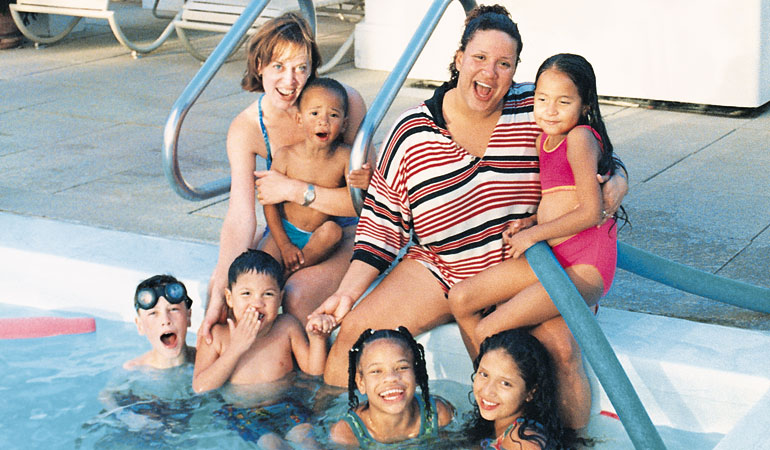There is a scene in Outside Looking In that captures, in something as ordinary as a Sunday afternoon lunch, the poignancy of feeling like an outsider in your own home, with your own family. “You don’t know what you’re missing,” says the filmmaker, Phil Bertelsen, as his young nephew turns down the chance to try collards and okra in a Harlem cafeteria.
For the black 11-year-old raised by white parents in Tucson, Arizona, these foods are as unfamiliar as the busy streets of his uncle’s Harlem home. For Bertelsen — a black man raised, like his nephew, by white adoptive parents — the adolescent’s lack of enthusiasm sparks a deeper realization: “I was trying to put something in him that was missing in me.”
Even as he hopes to infuse a sense of black life and traditions into his nephew’s experience, Bertelsen comes face to face with his own experience as an outsider, looking in.
No parent would wish such fragmentation and alienation for a child. And it’s clear that Bertelsen’s parents, in raising three children born to them and three adopted transracially, sought to create a strong and consistent family unit where race didn’t matter — where, as his mother says, “a child is a child is a child is a child.”
But the desire to enfold adopted children of color into a family with a deliberate inattention to race — a sentiment common, historically, among white adoptive parents — does a terrible disservice to the children. They will inevitably learn, as Bertelsen did, to be “aware of my difference” even as they are “taught not to see.”
Several years ago, when I showed my neighbor and good friend, a white woman, the room I was decorating for my newborn son, who is black and Latino, she stopped in her tracks as she came through the door. It wasn’t the yellow walls or multicolored curtains that caught her attention; it was some of the art I had chosen.
Among the prints depicting familiar nursery characters, I had hung a bright batik of some African women gathering together, as well as a Diego Rivera portrait of a boy, perhaps three or four, with caramel skin and dark-chocolate eyes, who bears a striking resemblance to my own beautiful son. “But Becky,” my friend began awkwardly, “don’t you think that the pictures draw attention to his difference? Wouldn’t it be better if you tried to make him feel the same?”
That question crystallized something I’d been struggling to articulate for myself back in those early days as the white mother of a black child. “The same? The same as what?” I asked her. “And why should the task be for him to be more ‘like’ me; why should he be the one to bridge the ‘difference’ between us? Why shouldn’t I learn to be more like him — or learn what it might be like to be him?”
By that point in my son’s life I knew about hair care and skin care. I was searching for child care that would surround him (and us) with people of color, and I was thinking about race to a degree that was unwelcome among many of my white friends. But at that moment I realized that I was becoming somewhat of an outsider myself.
In the five years since I became the mother of a black child, the revelations have been shocking, painful, and transforming. I had never before watched a family member being routinely followed by store guards. I had never seen a white visitor to our home assume that a member of my family was my “help.” I had never wondered whether doors might be open to me and closed to those I love because of our differing skin color.
I have come to believe that willful estrangement from our ordinary experience offers white transracial adoptive parents one of life’s great opportunities: not just to love our children, white and black, but to transform ourselves and our worlds, as well.
I’m not only talking about small transformations, like learning how to do our children’s hair, or filling our homes with creations by people of color. Or even bigger steps, like choosing schools with an eye toward their diversity or moving from a racially exclusionary neighborhood to one that reflects America’s ethnic variety.
I’m talking about a transformation that penetrates to the roots of our self-perception. I am learning to see what I did not see, to ask what I might not know, and to build a bridge, with a little more compassion and a lot more humility, to just what it is I might be missing.



